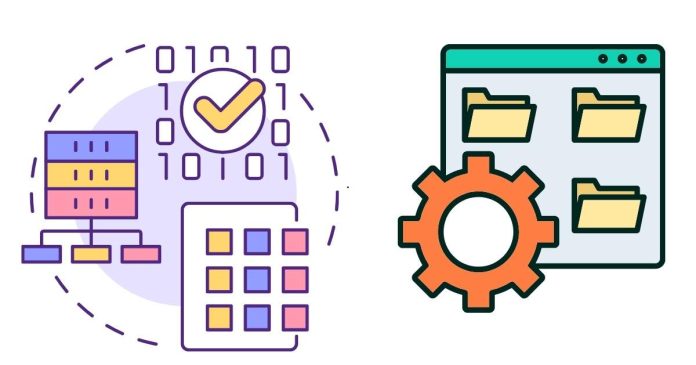In the world of computer science and programming, data structures play a pivotal role in organizing, managing, and storing data efficiently. One of the key concepts that make working with data structures easier is the concept of Abstract Data Types (ADT). But what exactly is an ADT, and why is it so important? Let’s dive into this fundamental concept.
What is an Abstract Data Type?
An Abstract Data Type (ADT) is a theoretical concept in computer science that defines a data structure solely in terms of the operations that can be performed on it, without specifying how these operations are implemented. In other words, an ADT focuses on what operations can be performed and what the behavior of those operations should be, rather than how they are executed or represented in memory.
An ADT is a logical description of a data structure, abstracting away the details of its implementation. This allows developers to focus on solving problems without getting bogged down by the specifics of data representation or low-level memory management.
Key Features of ADTs
- Encapsulation of Data: ADTs encapsulate data and expose only the operations that can be performed on it. The internal structure of the data is hidden, ensuring that users interact with the data only through well-defined operations.
- Operations Defined on ADT: An ADT specifies the types of operations that can be performed on its data, such as insertion, deletion, searching, updating, etc. These operations are typically defined in terms of the desired outcome, leaving the details of how they are achieved up to the implementation.
- Independence from Implementation: The implementation details of an ADT are hidden from the user. This makes the ADT flexible, as different implementations can be used for different purposes or environments without changing the interface or behavior.
- Abstraction: The key benefit of an ADT is its abstraction. The programmer doesn’t need to know how the data is organized in memory, which allows for easier use and maintenance.
Examples of Abstract Data Types
Let’s take a look at some common ADTs in data structures:
- List: A list is an ADT that represents a collection of elements arranged in a linear order. The operations that can be performed on a list include adding elements, removing elements, accessing elements by index, and more. The underlying implementation of a list might vary (such as an array or a linked list), but the ADT defines the allowed operations.
- Stack: A stack is an ADT that follows the Last-In, First-Out (LIFO) principle. It supports operations like:
- push: Add an element to the top of the stack.
- pop: Remove the top element from the stack.
- peek: View the top element without removing it.
- isEmpty: Check if the stack is empty.
- Queue: A queue is an ADT that follows the First-In, First-Out (FIFO) principle. Operations include:
- enqueue: Add an element to the back of the queue.
- dequeue: Remove an element from the front of the queue.
- peek: View the front element without removing it.
- isEmpty: Check if the queue is empty.
- Set: A set is an ADT that represents a collection of unique elements. Operations include:
- add: Insert an element into the set.
- remove: Remove an element from the set.
- contains: Check if an element exists in the set.
- union: Combine two sets.
- intersection: Find common elements between two sets.
- Map (Dictionary): A map is an ADT that stores key-value pairs. Common operations include:
- put: Insert a key-value pair.
- get: Retrieve the value associated with a key.
- remove: Remove a key-value pair.
- containsKey: Check if a key exists in the map.
Advantages of Using ADTs
- Modularity: Since ADTs are defined independently of their implementation, developers can work on various components of a program without interfering with each other. This modular approach allows for easier maintenance and updates.
- Reusability: ADTs can be reused in different applications because their abstract interface remains constant. You can change the underlying implementation (for example, from an array to a linked list) without altering the code that uses the ADT.
- Flexibility: ADTs provide a high degree of flexibility. As long as the abstract operations remain the same, developers can implement the ADT in different ways, optimizing for performance or memory usage.
- Code Readability: By hiding implementation details, ADTs make code cleaner and easier to read. Developers can focus on the problem at hand without worrying about the low-level details of data representation.
Conclusion
Abstract Data Types (ADTs) are a cornerstone of modern data structures and software design. By abstracting away the details of how data is stored and accessed, ADTs provide a clear interface that enables developers to work efficiently and effectively. Whether you’re working with lists, stacks, queues, sets, or maps, understanding ADTs is crucial to designing and implementing robust data-driven applications.
By focusing on abstraction and operation definitions, ADTs allow for flexibility, scalability, and maintainability in code, which are key attributes for building complex software systems.


